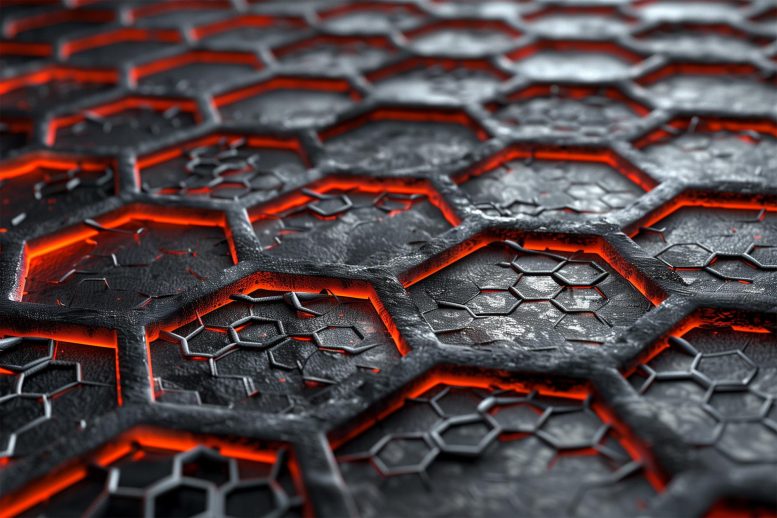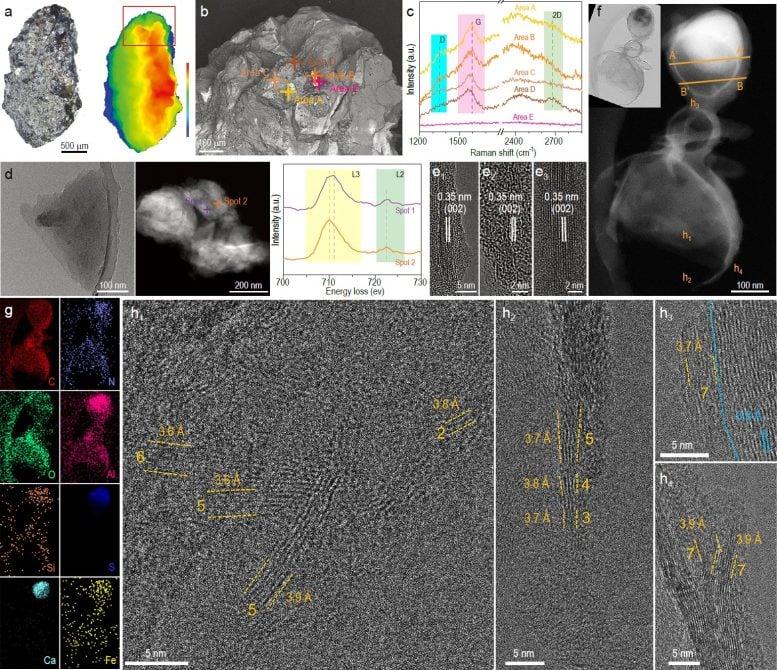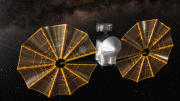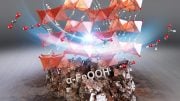
A recent study found thin layers of graphene in soil from the moon, suggesting that volcanic activity and solar winds might help create this material. This discovery could lead to more cost-effective ways to produce graphene on Earth, impacting technology and materials development significantly. (Artist’s concept.) Credit: SciTechDaily.com
Scientists have discovered a unique type of graphene in moon soil, brought back by China’s Chang’e 5 mission.
This graphene, which consists of several thin layers, may have formed billions of years ago due to volcanic activity and the effects of solar winds on the moon. This discovery is exciting because it shows us a new, possibly cheaper way to make graphene on Earth, which could revolutionize technologies in electronics and materials science.
A recent study, published in the journal National Science Review, revealed the existence of naturally formed few-layer graphene, a substance consisting of carbon atoms in a special, thin-layered structure.
The team, led by professors Meng Zou, Wei Zhang, and senior engineer Xiujuan Li from Jilin University and Wencai Ren from the Chinese Academy of Sciences’ Institute of Metal Research, analyzed an olive-shaped sample of lunar soil, about 2.9 millimeters by 1.6 mm, retrieved from the Chang’e 5 mission in 2020.
Graphene Formation in Lunar Soil
According to the team, scientists generally believe that some 1.9 percent of interstellar carbon exists in the form of graphene, with its shape and structure determined by the process of its formation.
Using a special spectrometer, researchers found an iron compound that is closely related to the formation of graphene in a carbon-rich section of the sample. They then used advanced microscopic and mapping technologies to confirm that the carbon content in the sample comprised “flakes” that have two to seven layers of graphene.

(a) Laser scanning confocal microscopy image and height distribution. (b) Backscattered electron SEM image and (c) Raman spectra corresponding to different areas. (d) TEM image, Cs-corrected HAADF-STEM image, and the corresponding EELS Fe L-edge spectra for different areas. (e) Cs-corrected HRTEM images. (f) HAADF-STEM image. (g) EDS elemental maps showing spatial distributions of the elements. (h) HRTEM images of the corresponding regions marked in (f). Credit: ©Science China Press
Implications of Graphene Discovery
The team proposed that the few-layer graphene may have formed in volcanic activity in the early stages of the moon’s existence, and been catalyzed by solar winds that can stir up lunar soil and iron-containing minerals that helped transform the carbon atoms’ structure. They added that impact processes from meteorites, which create high-temperature and high-pressure environments, may also have led to the formation of graphene.
On Earth, graphene is becoming a star in materials sciences due to its special features in optics, electrics, and mechanics. The team believes their study could help develop ways to produce the material inexpensively and expand its use.
Future Prospects of Graphene Utilization
“The mineral-catalyzed formation of natural graphene sheds light on the development of low-cost scalable synthesis techniques of high-quality graphene,” the paper said. “Therefore, a new lunar exploration program may be promoted, and some forthcoming breakthroughs can be expected.”
Reference: “Discovery of natural few-layer graphene on the Moon” by Wei Zhang, Qing Liang, Xiujuan Li, Lai-Peng Ma, Xinyang Li, Zhenzhen Zhao, Rui Zhang, Hongtao Cao, Zizhun Wang, Wenwen Li, Yanni Wang, Meiqi Liu, Nailin Yue, Hongyan Liu, Zhenyu Hu, Li Liu, Qiang Zhou, Fangfei Li, Weitao Zheng, Wencai Ren and Meng Zou, 17 June 2024, National Science Review.
DOI: 10.1093/nsr/nwae211









Be the first to comment on "Wonder Material Graphene Discovered in Lunar Soil Sample From Chinese Moon Mission"